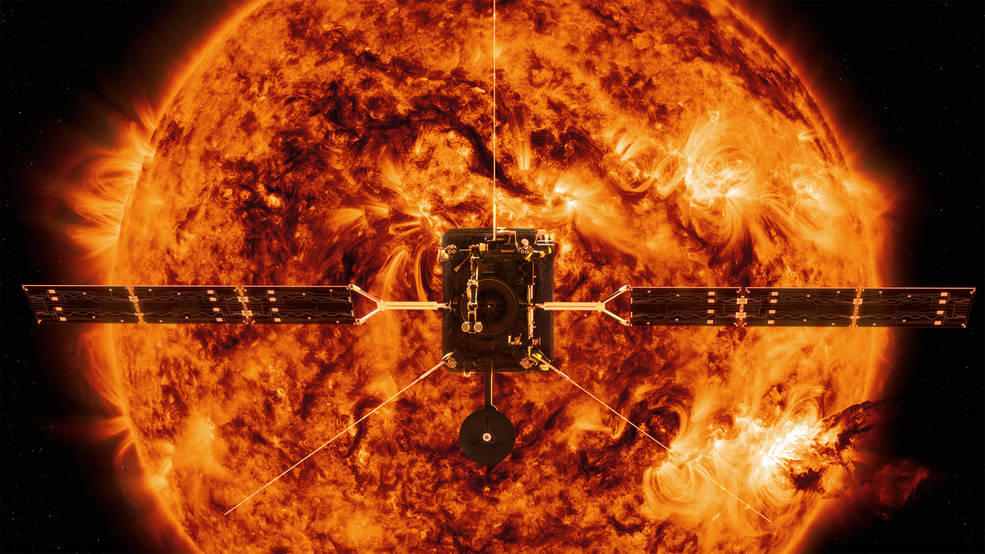
On Sunday night, a joint mission between NASA and the European Space Agency (ESA) will launch the Solar Orbiter from Space Launch Complex 41 at Cape Canaveral, Florida. The spacecraft will image the surface of the sun, coming closer to the star than any European satellite has before.
The satellite will enter an elliptical orbit around the sun, meaning it will come closer at some times than at others, and it will view some areas of the sun which have never been seen before, such as the poles. The aim of the mission is to study the sun’s effects up close, including trying to understand more about its magnetic field and its solar winds, which affect the rest of the solar system in the form of space weather.
At its closest, the Solar Orbiter will come just 26 million miles from the surface of the sun, which is around one quarter of the distance between the sun and the Earth. This means the craft will have to survive blistering temperatures of up to 932 degrees Fahrenheit. To allow the scientific instruments to view the sun, the craft has small sliding doors with heat resistant windows which let in the light, while the instruments themselves are kept cool behind a sunshield.
You can watch the launch live using the NASA TV video below. Alternatively, you can also watch on the ESA website.
Launch coverage begins at 7:30 p.m. PT on Sunday, February 9. The launch itself is targeted for just after 8 p.m. The separation of the spacecraft should occur at 8:55 p.m., and the earliest opportunity for signal acquisition, when the scientists discover if they can communicate with the craft as they hope, is at 9 p.m. PT. The solar array is set to be deployed just before 9:40 p.m.
Editors' Recommendations
- Remarkable imagery shows NASA probe as it’s hit by a solar storm
- How to watch NASA’s first space tourism launch to the ISS today
- How to watch record-breaking astronaut return to Earth this week
- How to watch NASA slowly roll its moon rocket to launchpad
- How to watch two NASA astronauts perform a spacewalk on Tuesday




